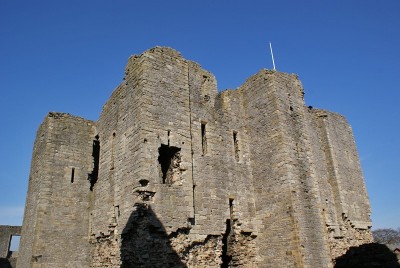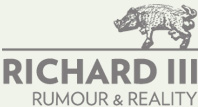Authority in the North

Middleham Castle, used by Richard III to engage in military activity and as a means of expressing his power in the north.
© Patrick Gibbs
Associated people
Other articles in this theme:
Description
In the time Richard spent in the north during his youth, he forged some close connections with members of the northern elite such as Francis Lovell, and his retainers Thomas Parr and Thomas Huddleston who died fighting beside him in 1471. However, he still had a considerable amount of work to do to extend his authority and security in the north as he entered adulthood.
One way in which Richard increased his authority in the north, beyond ceremony and pageantry, was forging connections to northerners, both through warfare and patronage. Proximity to the Scottish border made the city an ideal base from which to stage campaigns northwards, including that led by Richard as duke of Gloucester in July 1482. Richard made use of many castles, including York Castle and Middleham Castle, both as bases when engaging in military activity and as a means of expressing his power in the north.
Richard had connections to a range of northern castles, both within and outside of Yorkshire. Knaresborough Castle, the centre of the duchy of Lancaster lordship, was the focal point of conflict between Gloucester and the earl of Northumberland in the early 1470s. Richard added to his northern estates throughout the 1470s. Richard’s stewardship of the northern lands of the Duchy of Lancaster consisted of the lordships of Pickering and Tickhill, estates in the Aire valley (including Pontefract, the steward’s official residence) and the forest of Knaresborough. In February 1475 he was appointed as sheriff of Cumberland for life, which entitled him to the profits of the shrievalty, the demesne lands of Carlisle Castle and the city's fee farm. Several months later he was granted the forfeited barony and estates based on Skipton Castle of the Clifford family. Sir William Stanley surrendered them to Richard in exchange for Richard’s interest in Chirk, in the Welsh Marches. Richard planned a battlefield chapel at Towton and bought Helmsley Castle in 1478. Richard had a residence and a priory at Pontefract Castle where Richard Duke of York was buried. He executed his enemies Rivers, Vaughan and Grey there in 1483. In 1484 Richard used Scarborough Castle, which was granted to him in 1472, as a base for naval preparations against the Scots. Sheriff Hutton was another castle belonging to Richard III from 1471, the same year in which he gained Middleham, in Yorkshire, and Penrith, in Cumberland, and it has been suggested that an effigy of Prince Edward exists in the church there, though this is likely an incorrect identification. Barnard Castle was a personal possession of Richard III in right of Anne Neville. His badge of a white boar is carved on the soffit of an oriel window projecting from the west wall of the Inner Ward, and the rectangular tower on the east side of the Town Ward is named Brackenbury’s Tower after Richard’s retainer Sir Robert Brackenbury of Selaby.
Richard used his authority to bring benefits for the areas in which he held interest. For example, Hull and Beverly were given financial concessions and Pontefract was made into a borough. Scarborough was made a shire incorporate, which was a dignity usually only given to far larger towns such as London and Bristol. He also extended his local prominence through making gifts to local religious institutions. He gave £20 towards rebuilding Coverham Abbey near Middleham, recovered lands taken by Edward IV from Pontefract priory, and gave lands to found a chantry at Wilberfoss to pray for the souls of the royal family. Richard confirmed a grant to Holmfirth of £2 to support a priest at chapel of ease. Extensive gifts were made by Richard to the citizens of York and York Minster.
Richard tried to form good relationships with some of his leading nobles to extend his authority, both through gifts of land and patronage. The earl of Northumberland was given Buckingham’s rich lordship of Holderness (worth over £1000 per year) and recovered properties in south-west England he claimed by inheritance. He was also made Steward and appointed as warden general of the Scottish March. Richard’s desire to extend his northern authority had previously led to resentment from the earl of Northumberland, with whom he competed for retainers. Northumberland was forbidden from intruding into Richard’s West March, but his family’s main interests lay in the east. The two lords Scrope, near neighbours to Middleham, Lord Dacre in the West March, Lord Lumley and Lord Greystoke’s heir and the earls of Northumberland and Westmorland served Richard. However, there were still those in the north over whom Richard wished to exert authority but from whom he faced resentment. Richard had to neutralise three northern devoted supporters of Edward V on 13th Jun 1483, who were the Yorkshiremen Lord Hastings and Archbishop Rotherham and the Lancastrian Lord Stanley. Stanley did not support Richard, either in 1483 or 1485, and his lack of support was an important crack in the unity of the companions in arms of 1482.
Richard also had to deal with disputes, which could lead people to support or resent his authority, such as the one between Lord Stanley and the Harrington brothers, James and Robert. The agreement reached was held for over 10 years, but Stanley continued to resent the loyal Harringtons.
Sources
Grant of northern lands to Richard, 29th June 1471
CPR, 1467-77, p. 260.
Link to warrant for work on Sandal Castle
R. Horrox and P. W. Hammond (eds.), British Library Harleian Manuscript 433 Volume II (Upminster, 1979-82), p. 137.
Link to plan for a new bakehouse and brewhouse to be built at Sandal Castle
R. Horrox and P. W. Hammond (eds.), British Library Harleian Manuscript 433 Volume II (Upminster, 1979-82), p. 168.
Rous on the execution of Rivers, Grey and Vaughan at Pontefract
Alison Hanham, Richard III and his Early Historians 1483-1535 (Oxford, 1975), pp. 119-20.
Link to grant of financial concessions to Hull on 21st February 1484
CPR, 1484, p. 255.
Link to grant of financial concessions to Beverley on 10th July 1484
CPR, 1484, p. 484.

